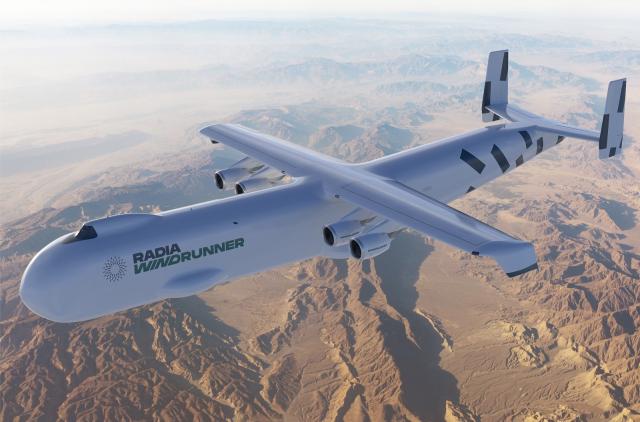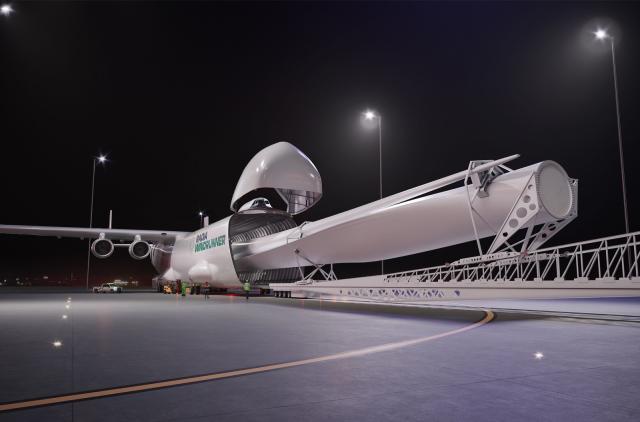 Radia unveils plans for world's largest transport aircraft
Radia unveils plans for world's largest transport aircraft
On 13 March 2024, Radia unveiled plans to the world to build and operate the world's largest transport aircraft. The aircraft is called the WindRunner and is specifically designed to transport wind turbine blades directly to a windfarm.
According to Radia, wind energy can be more efficient and economical if wind turbines would become larger. Today, a large wind turbine is around 90 meters. However, if they would be around 160 meters, they would be able to operate more efficient as wind speeds are more stable higher up. The challenge with higher wind turbines is also the need for larger blades. An average blade on a 90 meters turbine is 70 meters but for a 160 meter turbine, the blade will be around 105 meters tall.
Wind turbine blades need to be constructed out of one piece as the pressure on joints would be too large if they would consist of various parts. Transporting these large blades over roads would become very challenging and that's where the Radia WindRunner comes into play. The idea is to have the WindRunner pick-up the blade at the manufacturer and then fly it directly to the windfarm where a temporary runway would be built to accomodate the aircraft.
The WindRunner is planned to be an aircraft featuring four engines and a front loading nose. It will be 108 meters long, has an height of 24 meters, and a wingspan of 80 meters. In comparison, a Boeing B747-8F is 76,25 meters long, 19,4 meters high, and has a wingspan of 68,45 meters. The WindRunner has a payload bay capacity of 8,200 m3, while a B747-8F "only" has 692,7 m3. It has an envisioned range of up to 2,000 kilometers and will be able to operate out of semi-hardened runways that are only 1,800 meters long. 
Radia was founded in 2016 and has been working on its project GigaWind and WindRunner ever since. They are now half way their envisioned launch plans and decided to go public. The company has, so far, raised more than USD 100 million and is planning to have the gigantic aircraft in production by 2027.
Illustrations by Radia

